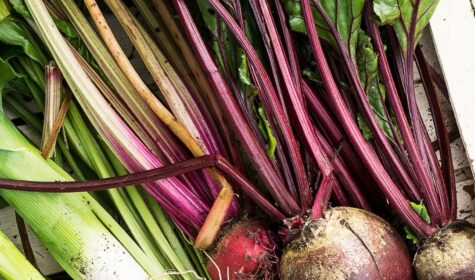There are exciting opportunities for using land on the edge of cities – the peri-urban (areas adjacent to urban settlements) fringe – to provide more agroecologically produced food and to connect urban and rural economies through food growing.
Not that long ago, market gardens around most towns and cities used to ensure a flow of fresh produce to large conurbations. It makes huge sense now to recreate and improve on this earlier model, with food resilience ever more critical in the face of multiple threats, from the increasing cost of food and energy to growing global instability.
Benefits to communities
Not only could more peri-urban farming solve some of the issues of urban access to diverse fresh produce, but it could also provide new jobs, training, and goods and services. In a new report, ‘Fringe Farming’, Sustain, The Landworkers’ Alliance, Shared Assets and city partners have condensed a year’s work with growers and communities in cities into some key policy recommendations for national government and local authorities.
With the changes suggested, we could be driving increased production of, and demand for, sustainably and regionally produced, nutritious, culturally appropriate foods as part of a green economic recovery in the urban fringe. Such an approach would create so many additional social, economic and ecological benefits in peri-urban areas including:
- the generation of goods and services that support community wealth-building;
- provision of jobs and training in a regional economy such as provided by Organic Lea in London;
- access to green space and outdoor learning at the edge of built-up cities;
- support for community development through community-owned resources, events and volunteering;
- sequestration of carbon, above and below ground, through farming approaches that work with natural cycles in effect creating ‘carbon-sinks’ surrounding urban space and even natural capital assets such as flood risk adaptation;
- increased biodiversity through companion planting and integration into agroforestry.
The new report shows how the edges of towns and cities, with close access to markets and histories of market gardens, could generate new green jobs, goods and services with money going back into communities. These kinds of community wealth building initiatives could be key to driving a resilient new food economy.
Evidence based
Examples of existing peri-urban farms show how they produce multiple benefits such as access to green space, outdoor education programmes, as well as public goods like increasing biodiversity and sequestering carbon into soils. Briefings produced during the project in 2021, show what can and is being achieved in Bristol, Sheffield, Glasgow and London. This new report highlights how these activities can support existing government targets on climate change, enterprise and education, if policies were supportive.
As Fran Halsall and Gareth Roberts from Sheffield Food Partnership, ShefFood, note, ‘As our nation’s food security is tested and cities declare climate and ecological emergencies, there has never been a more pressing need to seriously engage with urban and peri-urban agriculture. “Fringe Farming” is a timely intervention that will help remove the barriers to land access, enabling citizens to grow food sustainably, live well and build resilient communities. This is an opportunity to collectively advocate for policies supportive of city growers and farmers.’
‘Fringe Farming’, the collaborative UK-wide partnership, brought together hundreds of farmers and growers in 2021 to discuss what was needed to enable the sector to meet increasing demand and growing waiting lists for regional food products. Farmer forums repeatedly highlighted the issue of gaining secure access to land, raising initial project costs and accessing skills and training as significant barriers to setting up new initiatives.



